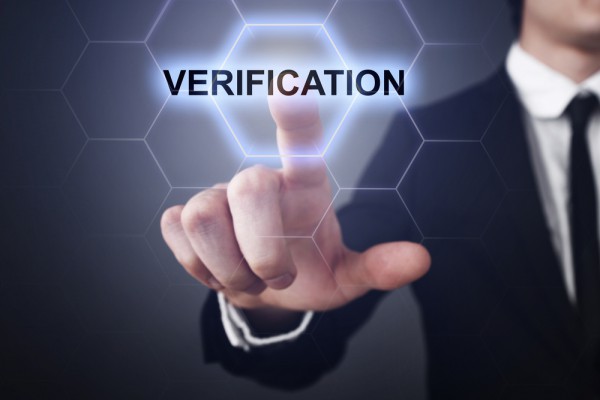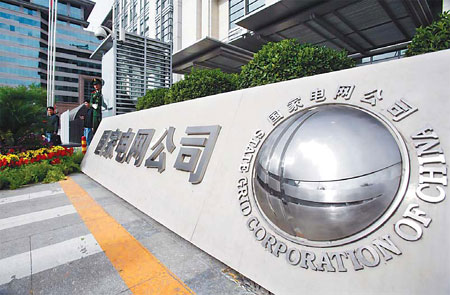Establishing a company in Guangzhou, the commercial heart of Southern China, is a strategic move. Your business address is more than just a location; it’s a statement about your company’s profile, credibility, and ambitions. Selecting the right district can significantly impact your operations, client perception, and access to talent.
Key Business Districts in Guangzhou:
1. Tianhe District (天河区) – The Modern CBD
· Profile: The undisputed financial and commercial core of Guangzhou. It’s home to skyscrapers, multinational corporations, and high-end shopping malls.
· Ideal For: Finance, IT, consulting, legal firms, multinational corporations, and any business that requires a prestigious image.
· Landmarks: Guangzhou Twin Towers (CTF Finance Centre & Guangzhou International Finance Place), Tianhe Sports Center, Zhujiang New Town.
· Advantages: Top-tier infrastructure, excellent transportation (multiple metro lines), high concentration of talent and clients.
· Considerations: The highest office rental costs in the city.
2. Yuexiu District (越秀区) – The Traditional & Political Center
· Profile: The historical heart of Guangzhou, hosting the provincial and municipal government offices. It blends traditional commerce with political significance.
· Ideal For: Government relations (lobbying), traditional trading companies, legal firms, NGOs, and cultural enterprises.
· Landmarks: Beijing Road Pedestrian Street, Yuexiu Park, Provincial Government Headquarters.
· Advantages: Established business environment, strong government resources, rich cultural history.
· Considerations: Older infrastructure, traffic congestion can be an issue.
3. Haizhu District (海珠区) – The Emerging & Creative Hub
· Profile: Known for its innovation and creativity, anchored by the massive Guangzhou International Convention and Exhibition Center (Pazhou Complex).
· Ideal For: E-commerce, tech startups, advertising, media, and all companies involved in import/export trade and exhibitions.
· Landmarks: Canton Fair Complex, Guangzhou Tower (across the river), Pazhou Internet Innovation Cluster.
· Advantages: Modern exhibition facilities, growing tech scene, relatively more affordable than Tianhe.
· Considerations: Still developing in some areas, traffic can be heavy during major events like the Canton Fair.
4. Nansha District (南沙区) – The Free Trade Zone & Future Gateway
· Profile: A national-level New Area and Free Trade Zone located by the Pearl River Estuary. It focuses on advanced manufacturing, shipping, and international trade.
· Ideal For: Manufacturing, logistics, international trade, shipping companies, and businesses looking for significant tax incentives and policy support.
· Landmarks: Nansha Port, Nansha Free Trade Zone.
· Advantages: Attractive tax benefits, streamlined customs procedures, ample space for development.
· Considerations: Far from the city center (about 1-hour drive), still under large-scale development.
Important Considerations When Choosing an Address:
· Virtual Offices & Serviced Offices: For startups and small businesses, serviced offices (e.g., Regus, Sparkeagle) or virtual office services provide a prestigious address and secretarial services without the cost of a full lease. This is a highly popular and cost-effective way to start.
· Legal Registration: The address must be suitable for commercial use and able to be registered with the local Administration for Market Regulation (市场监督管理局). Not all residential or mixed-use properties can be registered.
· Accessibility: Proximity to metro stations (e.g., Lines 3, 5, and the APM in Tianhe) is a major advantage for both employees and clients.
Final Steps:
Once you select a district, work with a local real estate agent who specializes in commercial property. They can help you navigate the leasing process, ensure the property can be legally registered, and negotiate favorable terms. Your address in Guangzhou will be the foundation of your brand’s story in one of the world’s most dynamic economies.
How to Close a Company in Hong Kong: Key Features and Nuances
Closing a company in Hong Kong is a formal process regulated by the Companies Registry and the Inland Revenue Department (IRD). The specific procedure depends on the company’s financial status. Understanding the correct pathway and its intricacies is crucial to ensure a compliant and smooth dissolution.
There are two main methods for closing a private limited company in Hong Kong:
1. Deregistration (Striking Off)
2. Members’ Voluntary Winding Up
1. Deregistration (Striking Off)
This is the most common and cost-effective method for companies that are no operational and have no liabilities.
Key Prerequisites:
· The company has never commenced business or has ceased business for at least 3 months.
· The company has no outstanding liabilities (e.g., no debts, no bank loans).
· The company’s assets do not include any interest in land in Hong Kong.
· All shareholders must provide written consent.
· The company is not involved in any legal proceedings.
· The company has obtained a “Notice of No Objection to a Company being Deregistered” from the IRD.
Step-by-Step Process:
1. Cease Business and Settle Affairs: Ensure all business activities have stopped. Settle all debts, close bank accounts, and dispose of assets.
2. Hold a Board Meeting: Pass a directors’ resolution confirming the company’s solvency and the decision to apply for deregistration.
3. Apply for a “Notice of No Objection” from the IRD: This is the most critical step. You must submit:
· Form IR1263 (Application for a Notice of No Objection to a Company being Deregistered).
· A fee of HK$350 (as of 2023).
· Supporting documents, such as financial statements proving no assets and liabilities.
· The IRD will review the application and, if satisfied, issue the “Notice of No Objection.” This process can take several weeks.
4. Submit Deregistration Application to Companies Registry: Once you have the “Notice of No Objection,” submit Form NDR1 (Application for Deregistration of a Defunct Company) to the Companies Registry along with the fee (HK$420 as of 2023).
5. Gazette Notification and Dissolution: The Companies Registry will examine the application. If approved, it will publish a notice in the Hong Kong Gazette. Assuming no objections are raised within 3 months, a second notice is published, and the company is formally dissolved.
Nuances & Pitfalls:
· IRD Scrutiny: The IRD will not issue a “No Objection” notice if the company has overdue tax returns or unfinalized tax liabilities. Ensure all Profits Tax and Employer’s Return filings are up to date.
· Objections from Creditors: If a creditor objects during the gazetting period, the deregistration process will be halted.
· Post-Dissolution Claims: In rare cases, if a claim arises after dissolution, the court may order the restoration of the company.
—
2. Members’ Voluntary Winding Up
This is a formal liquidation process for solvent companies that wish to distribute their assets to shareholders.
When is it used?
· The company has significant assets to distribute.
· The shareholders have decided to terminate the company’s existence formally.
· It is often faster than deregistration for companies with assets.
Key Prerequisites:
· The company must be solvent and able to pay its debts in full within 12 months.
· A Declaration of Solvency must be made by the directors.
Step-by-Step Process:
1. Declaration of Solvency: The directors make a statutory declaration stating the company can pay its debts in full.
2. Shareholders’ Resolution: An extraordinary resolution is passed by the shareholders (requiring 75% majority) to wind up the company voluntarily.
3. Appoint a Liquidator: A qualified liquidator (usually a CPA or a lawyer) is appointed to take control of the company, realize its assets, settle liabilities, and distribute surplus assets to shareholders.
4. Liquidator’s Duties: The liquidator manages the process, files necessary documents with the Companies Registry, and calls for final claims from creditors.
5. Final Meeting and Dissolution: Once the winding up is complete, the liquidator calls a final meeting of shareholders and submits a final account to the Companies Registry. The company is dissolved three months after the registration of this return.
Nuances & Pitfalls:
· Cost: This is more expensive than deregistration due to the liquidator’s professional fees.
· Complexity: It is a more complex legal process requiring professional guidance.
· Liquidator’s Power: The board of directors’ powers cease upon the appointment of the liquidator.
Crucial Considerations for Both Methods
· Employees: All employment contracts must be terminated correctly, with all severance payments, wages in lieu of notice, and other statutory benefits paid in full.
· Business Registration: The Business Registration Certificate must be cancelled with the IRD upon dissolution.
· Professional Advice: It is highly recommended to seek advice from a professional corporate service provider, accountant, or lawyer. They can handle the paperwork, liaise with government departments, and ensure compliance, avoiding costly mistakes.
· Dormant Companies: Even if your company is dormant, you must still file annual returns and tax returns. The only way to stop these obligations is to formally dissolve the company.
Closing a company in Hong Kong is a structured process. For simple, liability-free companies, deregistration is the straightforward choice. For solvent companies with assets to distribute, a members’ voluntary winding up is more appropriate. Thorough preparation, settling all obligations, and understanding the nuances with the IRD are the keys to a successful company closure.
Financial Reporting for Companies in Hong Kong
Hong Kong offers a business-friendly environment with a robust and transparent legal framework. A key part of maintaining good standing is compliance with local financial reporting requirements. All companies incorporated in Hong Kong must prepare and file financial statements in accordance with the Hong Kong Companies Ordinance and Hong Kong Financial Reporting Standards (HKFRS).
This guide outlines the essential requirements for financial reporting for companies in Hong Kong.
1. What are the Financial Reporting Requirements?
Every Hong Kong company, regardless of its size or activity level, has the following core obligations:
· Prepare Financial Statements: Prepare audited financial statements for each financial year.
· Appoint an Auditor: Appoint a qualified Hong Kong CPA firm as an auditor within 18 months of incorporation.
· Annual Audit: Have the financial statements audited by the appointed auditor.
· File Profits Tax Return: File the Profits Tax Return (Form BIR51) together with the audited financial statements and tax computation with the Inland Revenue Department (IRD).
· Hold Annual General Meeting (AGM): Present the audited financial statements to shareholders at an AGM.
· File Annual Return (NAR1): File an Annual Return (Form NAR1) with the Companies Registry, which confirms basic company details.
2. The Financial Statements: Key Components
A complete set of financial statements under HKFRS includes:
· Statement of Financial Position (Balance Sheet): Shows the company’s assets, liabilities, and equity at the reporting date.
· Statement of Comprehensive Income (Profit and Loss Account): Presents the company’s revenue, expenses, and profit or loss for the financial year.
· Statement of Changes in Equity: Shows the changes in the company’s equity during the year.
· Statement of Cash Flows: Reports the cash inflows and outflows from operating, investing, and financing activities.
· Notes to the Financial Statements: Provide detailed explanations and breakdowns of the figures presented in the statements, including significant accounting policies.
3. Accounting Standards: Hong Kong Financial Reporting Standards (HKFRS)
HKFRS is fully aligned with the International Financial Reporting Standards (IFRS). This ensures high-quality, globally recognized financial reporting. Small and private companies may be eligible to use the Hong Kong Financial Reporting Standard for Private Entities (PFRS), which is a simplified standard with reduced disclosure requirements.
4. Reporting and Filing Deadlines
Meeting deadlines is critical to avoid penalties.
· Annual Audit & AGM:
· Private Companies: Must hold the AGM and lay the financial statements within 9 months after the financial year-end.
· Public Companies: Must do so within 6 months after the financial year-end.
· Filing Annual Return (NAR1): The NAR1 form must be filed with the Companies Registry annually on the anniversary of the company’s incorporation date. There is a 42-day late filing period, after which higher fees and penalties apply.
· Filing Profits Tax Return: The IRD typically issues tax returns on the first working day of April each year. The filing deadline is usually:
· For newly issued returns: Within 1 month from the date of issue.
· For subsequent returns: The deadline will be printed on the return, usually allowing 1 to 3 months.
5. Audit Requirements
All Hong Kong companies are required to have their financial statements audited, unless they qualify as a dormant company. A dormant company is one that has no significant accounting transactions during the financial year.
6. Consequences of Non-Compliance
Failure to comply with financial reporting obligations can result in:
· Heavy penalties and fines from both the Companies Registry and the IRD.
· The company and its directors being prosecuted.
· Accumulation of overdue penalties and interest on unpaid taxes.
· The company being struck off the register.
Maintaining compliant financial reporting in Hong Kong is a fundamental legal duty for all companies. The process, governed by HKFRS and the Companies Ordinance, requires preparing audited financial statements, filing them with the IRD, and submitting the Annual Return to the Companies Registry. Engaging a professional Hong Kong CPA firm is highly recommended to ensure accuracy, meet all deadlines, and avoid the severe consequences of non-compliance.
Corporate Agreements for Establishing a Company in Hong Kong
Establishing a company in Hong Kong is a streamlined process, but its long-term success hinges on a solid legal foundation. While the incorporation itself requires submitting basic documents to the Companies Registry, the real corporate governance framework is built upon key internal agreements. The two most critical documents are the Articles of Association and the Shareholders’ Agreement.
This article explains the purpose, key clauses, and importance of each.
1. Articles of Association (AoA)
The Articles of Association (公司章程) are the company’s constitution. It is a public document filed with the Hong Kong Companies Registry and binds the company and all its members.
Purpose: To govern the internal management and procedures of the company. It outlines the relationship between the company and its directors and shareholders.
Key Clauses Typically Found in the AoA:
· Share Capital: Details the authorized share capital, different classes of shares (e.g., Ordinary, Preferred), and their respective rights (voting, dividend).
· Directors’ Powers & Duties: Defines the powers, responsibilities, and procedures for appointing and removing directors.
· General Meetings: Sets out the rules for calling and conducting shareholder meetings, including voting procedures and quorum requirements.
· Transfer of Shares: Outlines the process for transferring shares, which may include pre-emption rights (giving existing shareholders the first right to buy shares before they are sold to an outsider).
· Dividends: Details the policy for declaring and distributing dividends to shareholders.
Default Status: If a company does not register its own custom AoA, it automatically adopts the standard “Model Articles” from the Hong Kong Companies Ordinance, which may not be suitable for all businesses.
2. Shareholders’ Agreement (SHA)
The Shareholders’ Agreement (股東協議) is a private, confidential contract between some or all of the shareholders. It is not filed with any public registry.
Purpose: To define the rights, obligations, and protections of the shareholders amongst themselves. It deals with the private understanding between the owners of the company.
Key Clauses Typically Found in an SHA:
· Deadlock Resolution: Mechanisms to resolve a situation where shareholders are unable to make a decision (e.g., mediation, casting vote).
· Restrictive Covenants: Prevents shareholders from competing with the company or poaching key employees.
· Drag-Along and Tag-Along Rights:
· Drag-Along: Allows a majority shareholder to force minority shareholders to join in the sale of the company.
· Tag-Along: Allows a minority shareholder to join a sale initiated by a majority shareholder.
· Exit Strategy: Details the process for a shareholder to sell their shares, including valuation methods (e.g., fair market value determined by an auditor).
· Funding and Capital Contributions: Outlines agreements on future funding requirements and how shareholders will contribute.
· Confidentiality: Legally binds shareholders to keep company information secret.
Why You Need Both Documents
While there can be overlap, these documents serve different purposes and complement each other:
· The AoA is a public document for external compliance and basic internal governance.
· The SHA is a private document for internal relationship management and protecting shareholder investments.
The SHA can cover more flexible and detailed arrangements than the AoA. If there is a conflict between the two, the Shareholders’ Agreement will usually prevail among the shareholders, but the AoA remains the binding document for third parties.
Essential Steps for Establishment
1. Incorporate the Company: Submit the “Incorporation Form (NNC1)” and your custom Articles of Association (or adopt the Model Articles) to the Companies Registry.
2. Draft the Shareholders’ Agreement: Simultaneously, all shareholders should negotiate and sign the SHA. This is a critical step that is often overlooked by new companies.
3. Seek Professional Advice: The specific terms of your AoA and SHA are vital. It is highly recommended to engage a Hong Kong law firm and corporate service provider to draft these documents tailored to your business structure and goals.
A successful corporate foundation in Hong Kong requires more than just a business registration certificate. Drafting a robust set of Articles of Association and a comprehensive Shareholders’ Agreement is an essential investment. These corporate agreements provide clarity, prevent future disputes, protect shareholders’ rights, and create a stable framework for your company’s growth and success.
How Successfully Open a Branch of Your Company in China
Expanding your business into China is a significant step towards tapping into one of the world’s most dynamic consumer markets. However, the process involves navigating a unique legal, regulatory, and cultural landscape. A common and strategic entry model for foreign companies is establishing a Branch Office (分公司, Fēn Gōngsī).
This guide will walk you through the key steps, requirements, and considerations for opening a branch in China.
What is a Branch Office in China?
A Branch Office is an extension of its foreign parent company. It is not a separate legal entity. This means the parent company bears full liability for the branch’s debts and obligations. A branch is suitable for non-profit generating activities such as:
· Market liaison and research
· Product promotion and marketing
· Coordination with suppliers and partners
· After-sales services and support
Crucial Note: A Branch Office is generally not allowed to engage in direct profit-making activities like signing sales contracts or issuing invoices. For that, you would need to establish a Wholly Foreign-Owned Enterprise (WFOE).
Key Steps to Establish a Branch Office in China
1. Pre-Establishment Assessment & Planning
· Define Your Scope: Clearly outline the representative activities your branch will perform.
· Choose a Location: Select a city that aligns with your industry, such as Shanghai, Beijing, Shenzhen, or Guangzhou. Consider factors like target market, logistics, and local government incentives.
· Secure a Registered Address: You must have a physical office address to complete registration. Virtual offices are generally not acceptable.
2. Obtain Necessary Approvals
· Company Documents: Prepare notarized and legalized copies of your parent company’s Certificate of Incorporation, Articles of Association, and Board Resolution approving the branch’s establishment.
· Appoint Chief Representative: Designate a Chief Representative who will act as the legal head of the branch in China.
3. Registration with Chinese Authorities
The process typically involves multiple government bodies:
· State Administration for Market Regulation (SAMR): Submit all documents for official registration and obtain a Business License.
· Customs: If you plan to import samples or exhibits, you must register.
· Statistics Bureau: Register for statistical reporting.
· Foreign Exchange Bureau: Register to facilitate foreign currency transactions.
4. Post-Registration Formalities
· Corporate Bank Account: Open a RMB and foreign currency bank account with a local Chinese bank.
· Tax Registration: Register with the State Taxation Bureau and Local Taxation Bureau. Understand your tax obligations, including Corporate Income Tax and Value-Added Tax (VAT).
· Social Security Registration: Register your employees with the local social security bureau to make mandatory contributions.
Key Considerations and Challenges
· Liability: Remember, the parent company has unlimited liability.
· Funding: The operational costs of the branch must be funded by the parent company. The branch cannot generate its own revenue.
· Compliance: Strict adherence to Chinese accounting, tax, and reporting standards is mandatory. Hiring a local accounting firm is highly recommended.
· Cultural and Language Barrier: Navigating bureaucracy requires local expertise. Partnering with a professional services firm specializing in China market entry is invaluable.
Opening a branch office in China is a viable strategy for market testing, building brand presence, and facilitating non-sales operations. While the process is complex, thorough preparation and understanding of the regulations can lead to a successful establishment. For most profit-oriented activities, however, setting up a WFOE remains the preferred and more flexible option.
A Comprehensive Guide to Company Verification in Hong Kong
In the dynamic and internationally-oriented business environment of Hong Kong, conducting due diligence on a potential partner, supplier, or client is not just prudent—it’s essential. Company verification, often the first step in this process, provides critical insights into a company’s legitimacy, financial health, and corporate standing. Fortunately, Hong Kong’s transparent regulatory framework makes this process systematic and accessible.
Why Verify a Hong Kong Company?
· Risk Mitigation: To avoid fraud, scams, and partnerships with shell companies.
· Investment Decisions: To assess the credibility and financial stability of a target company.
· Regulatory Compliance: To meet “Know Your Customer” (KYC) and anti-money laundering (AML) obligations.
· Partnership Assurance: To confirm the legal status and good standing of a potential partner before signing contracts.
Key Steps and Sources for Company Verification
1. Search the Official Companies Registry (ICRIS)
The Integrated Companies Registry Information System (ICRIS) is the primary and most authoritative source for company data in Hong Kong. Managed by the Companies Registry, this online portal provides access to fundamental information about any registered Hong Kong company.
· What you can find:
· Company Name and Registration Number
· Company Status (e.g., “Live”, “Dissolved”, “Deregistered”) – This is crucial.
· Date of Incorporation
· Registered Office Address
· Information on Directors and Company Secretary
· Certificate of Incorporation and Business Registration Certificate (for a fee)
· How to access: You need to register for an ICRIS online account. Basic information is available for free, while more detailed documents require payment of a small fee.
2. Verify the Business Registration Certificate (BRC)
Every company operating in Hong Kong must have a valid Business Registration Certificate issued by the Inland Revenue Department (IRD). The BRC displays the company’s name, registration number, and the validity period of the certificate. Ensuring it is current is a basic check.
3. Analyze Financial Statements (for Limited Companies)
While private companies’ detailed financial statements are not always public, Hong Kong law requires companies to file an Annual Return (Form NAR1) each year. For smaller private companies, this may include simplified reporting. However, for a deeper financial health check, you can:
· Request financial statements directly from the company.
· Check if the company has filed any charges (e.g., mortgages) against its assets, which is public record in ICRIS.
4. Check for Litigation and Legal Proceedings
While not consolidated in a single database, you can check:
· The Hong Kong Judiciary website for court case searches.
· The Official Receiver’s Office for winding-up and bankruptcy records.
5. Conduct On-the-Ground Due Diligence
For high-stakes engagements, consider:
· Visiting the company’s registered office.
· Checking industry-specific licenses and memberships.
· Using the services of professional investigative firms or law firms in Hong Kong for a comprehensive background check.
Red Flags to Watch Out For
· Mismatched Information: The company’s website, business card, or invoice address does not match its registered office address.
· Suspended or Dissolved Status: The company is not in “Live” status in ICRIS.
· Expired Business Registration Certificate.
· Nominee Directors with No Track Record: A company where all directors appear to be nominal, with no other business history.
· Unverifiable Physical Presence: No verifiable office, landline phone number, or staff.
Company verification in Hong Kong is a straightforward yet powerful process, largely thanks to the transparency of the ICRIS system. By systematically checking the official records, businesses and investors can significantly reduce their risks, build trust with legitimate partners, and make informed decisions in one of the world’s most competitive markets. A small investment of time and resources in due diligence can prevent substantial financial and reputational losses down the line.
Company Registration Authorities in China: A Guide to SAMR and Beyond
Navigating the business landscape in China requires a clear understanding of its administrative framework. Contrary to systems in many Western countries, company registration in China is a centralized and hierarchical process, with the State Administration for Market Regulation (SAMR) at its apex. This guide explains the key authorities responsible for company registration in the People’s Republic of China.
The Primary Authority: State Administration for Market Regulation (SAMR)
The State Administration for Market Regulation (SAMR, 国家市场监督管理总局) is the supreme body overseeing market regulation, enterprise registration, and intellectual property rights in China. Established in 2018, it consolidated several previous agencies to create a more streamlined regulatory environment.
SAMR’s key responsibilities include:
· Company and business registration.
· Market supervision and regulation.
· Anti-monopoly enforcement.
· Product quality and food safety supervision.
· Management of intellectual property (patents, trademarks).
· Standardization and certification.
The Local Implementation: Administration for Market Regulation (AMR)
While SAMR sets national policy, the actual registration process is handled by its local branches. These are known as Administrations for Market Regulation (AMRs) at the provincial, municipal, and district/county levels.
· For a foreign company registering in Shanghai: You would submit your application to the Shanghai Municipal Administration for Market Regulation.
· For a small domestic company in a Beijing district: You would go to the AMR of that specific district.
These local AMRs are the direct points of contact for businesses. They review application materials, issue the Business License (营业执照), and maintain local company registries.
The “One-Window” System: Streamlining the Process
To improve efficiency, China has widely implemented a “One-Window” (一窗通) service system. While the AMR remains the ultimate approving authority, this system allows applicants to submit all required documents—including those for taxes, social security, and corporate seals—through a single online or physical portal. This significantly simplifies what was once a multi-departmental process.
Other Specialized Regulatory Bodies
Depending on the industry, a company may need approvals from other specialized authorities before obtaining its business license from the AMR. These are not registration authorities per se, but their permits are prerequisites.
· Financial Sectors (Banking, Insurance, Securities): Require pre-approval from regulators like the China Banking and Insurance Regulatory Commission (CBIRC) and the China Securities Regulatory Commission (CSRC).
· Healthcare and Pharmaceuticals: Need licenses from the National Medical Products Administration (NMPA).
· Cultural and Media Sectors: May require permits from the National Radio and Television Administration (NRTA) or the Ministry of Culture and Tourism.
The Core Document: The Business License
The ultimate proof of successful registration is the Business License (营业执照) issued by the local AMR. This document contains critical information such as:
· Unified Social Credit Code (USCC) – the company’s unique 18-digit identifier.
· Company Name (in Chinese)
· Legal Representative
· Registered Capital
· Business Scope
· Address and Date of Establishment
In summary, the company registration system in China is a tiered structure led by the State Administration for Market Regulation (SAMR) and executed by its local Administrations for Market Regulation (AMRs). Understanding this hierarchy and leveraging the streamlined “One-Window” system is crucial for any entrepreneur or enterprise looking to establish a legal entity in China. Proper registration with the AMR is the foundational step for lawful operation and long-term success in the Chinese market.
Open a Company in China in 2025
The landscape for foreign investment in China is continuously evolving. As we look towards 2025, the process of establishing a company remains a strategic gateway to the world’s second-largest economy, but it requires navigating new opportunities, digital frameworks, and regulatory nuances. This guide provides a roadmap for what to expect when opening a company in China in 2025.
Why China in 2025? The Evolving Value Proposition
Beyond the massive market size, China’s value proposition is maturing:
· Digital-First Ecosystem: Seamless integration into the world’s most advanced digital payment, e-commerce, and social media landscape.
· Supply Chain Resilience: While still a manufacturing powerhouse, the focus is shifting to high-tech, automation, and resilient supply chain solutions.
· Policy Tailwinds: Continued government support for foreign investment in prioritized sectors like renewable energy, advanced manufacturing, AI, and biotechnology.
· Consumption Upgrade: A growing middle class with increasing purchasing power and demand for high-quality imported goods, niche brands, and services.
Step-by-Step: The Company Establishment Process in 2025
The core process remains, but has become increasingly digitized and streamlined.
1. Pre-Registration: Planning & Preparation
· Choose Your Entity: The Wholly Foreign-Owned Enterprise (WFOE) remains the most common and independent choice for most businesses. Representative Offices (for liaison activities) and Foreign-invested Partnership Enterprises (FIPEs) are other options for specific needs.
· Define Business Scope: This is critical. Your stated business scope on the营业执照 (Business License) dictates your permitted activities. It must be precise and aligned with the 2025 Negative List, which outlines sectors restricted or prohibited to foreign investment.
· Secure a Registered Address: You must have a physical, non-virtual office address for registration. This is a legal requirement for obtaining a business license.
2. The Digital-First Registration Process
China has fully embraced a “One-Window System” (一窗通), which integrates applications for multiple departments into a single online portal.
· Company Name Pre-approval: Submit proposed names via the online Administration for Market Regulation (AMR) system.
· Submit Electronic Documents: The core application is submitted online, including Articles of Association, legal representative and director information, and registered address proof.
· Receive Your Business License: Upon approval, you will receive a digital and/or physical copy of your Business License (营业执照). This includes your unique Unified Social Credit Code (USCC), your company’s national ID.
3. Post-Registration Formalities
The license is just the beginning. Key next steps include:
· Company Chop (Seal) Carving: Legally carve and register your company’s official seal, financial seal, and legal representative seal with the Public Security Bureau.
· Bank Account Opening: Use your Business License and chops to open a corporate RMB basic account.
· Tax Registration: Finalize your registration with the State Taxation Administration to obtain tax clearance certificates and determine your taxpayer status.
· Social Security & Housing Fund Registration: Register with the local authorities to fulfill your obligations for employees.
Key Trends & Considerations for 2025
· Enhanced Digital Scrutiny: Be prepared for thorough online verification of documents and ultimate beneficial ownership (UBO) information.
· Data Compliance is Paramount: The Personal Information Protection Law (PIPL) and Data Security Law (DSL) are strictly enforced. A data compliance strategy is no longer optional but a core business requirement.
· Environmental & Sustainability Standards: “Green” credentials and compliance with China’s dual-carbon goals (碳达峰, 碳中和) can be a significant advantage, especially in manufacturing.
· Talent Competition: Attracting and retaining skilled talent, particularly those with cross-border experience, remains a key challenge and cost factor.
Opening a company in China in 2025 is more accessible than ever due to digitalization, but the regulatory environment is more sophisticated. Success will depend on:
· Thorough Due Diligence: Deeply research your sector’s alignment with the Negative List and industrial policies.
· A Long-Term Perspective: View market entry as a strategic, long-term investment, not a quick win.
· Seeking Professional Help: Engaging with local consultants, lawyers, and accounting firms is highly recommended to navigate the legal complexities, ensure data compliance, and avoid costly mistakes.
The door to the Chinese market is open, but walking through it successfully in 2025 requires a well-informed, compliant, and digitally-savvy approach.
Hong Kong’s Corporate Titans: The Pillars of a Global Financial Hub
Hong Kong’s skyline, a breathtaking forest of glass and steel, is a physical manifestation of its economic might. This city is not just a tourist destination; it is a pulsating heart of global finance, trade, and innovation, home to some of the world’s most influential and valuable companies. These corporate titans span diverse sectors, from banking and property to logistics and technology, forming the backbone of the city’s economy and shaping its global identity.
The Financial Powerhouses
At the core of Hong Kong’s economy lies its formidable financial sector, anchored by banking giants and a world-leading stock exchange.
· HSBC Holdings PLC (滙豐控股): Founded in Hong Kong and Shanghai in 1865, HSBC is synonymous with the territory’s financial system. It is one of the world’s largest banking and financial services organizations, with a sprawling international network. Its iconic headquarters in Central dominates the harbor front, symbolizing its deep-rooted presence.
· AIA Group (友邦保險): As the largest independent publicly listed pan-Asian life insurance group, AIA is a cornerstone of the region’s financial security. With a presence in 18 markets across Asia-Pacific, its phenomenal growth is intricately linked to the rising wealth and insurance demand in the region.
· Hong Kong Exchanges and Clearing Limited (HKEX) (香港交易及結算所有限公司): HKEX operates one of the world’s major exchange groups. It is a key gateway for capital flowing into and out of China, hosting a massive number of listings from both mainland Chinese companies (H-shares) and international firms.
The Property and Conglomerate Dynasties
Hong Kong’s scarce land and dense population have given rise to immensely powerful property developers, many of which have evolved into sprawling conglomerates.
· CK Hutchison Holdings (長江和記實業) & CK Asset Holdings (長江實業集團): Controlled by veteran tycoon Li Ka-shing, these sister companies represent a vast empire. CK Hutchison has global interests in ports, retail (e.g., Watsons), infrastructure, and telecommunications, while CK Asset is focused on property development and investment.
· Sun Hung Kai Properties (新鴻基地產): As one of Hong Kong’s largest property developers, SHKP is responsible for shaping much of the city’s urban landscape, from luxury residential towers to massive shopping malls and commercial complexes like the International Commerce Centre (ICC).
· Swire Pacific (太古集團): A diversified conglomerate with a history stretching back over 150 years, Swire has major interests in property (e.g., Taikoo Shing), aviation (it is a major shareholder in Cathay Pacific), beverages (Swire Coca-Cola), and marine services.
Logistics and Utilities: The Arteries of Commerce
Keeping a global hub running requires critical infrastructure companies.
· Cathay Pacific Airways (國泰航空): As Hong Kong’s flag carrier, Cathay Pacific has been instrumental in connecting the city to the world, establishing it as a premier international aviation hub.
· MTR Corporation (香港鐵路有限公司): Far more than just a subway operator, the MTR is a model of efficiency and a major property developer. Its rail network is the lifeblood of the city, and its business model is studied worldwide.
The New Guard: Technology and Innovation
While traditional sectors dominate, new tech giants have also established a significant presence.
· Tencent (騰訊): Although headquartered in Shenzhen, the Chinese tech behemoth has a massive and growing presence in Hong Kong, with its shares being a heavyweight constituent of the HKEX. Its influence in gaming, social media, and fintech is deeply felt in the city.
· Alibaba Group (阿里巴巴集團): Following its secondary listing in Hong Kong in 2019, Alibaba has further cemented the city’s status as a fundraising hub for Chinese tech giants. Its presence underscores the deep financial ties between Hong Kong and mainland China.
The largest companies in Hong Kong are more than just businesses; they are institutions that define the city’s character and drive its prosperity. They represent a unique blend of deep-rooted, family-controlled conglomerates and dynamic, globally-oriented financial and tech firms. Together, they form a resilient and powerful economic ecosystem, ensuring that Hong Kong remains a formidable force in the global economy for years to come.
Zero Audit in Hong Kong: A Strategic Tool for Business Compliance and Efficiency
In the dynamic business landscape of Hong Kong, maintaining robust financial governance is paramount. For many small and medium-sized enterprises (SMEs) and dormant companies, the concept of a “Zero Audit” emerges as a critical aspect of annual compliance. Contrary to what the name might imply, it does not mean the absence of an audit requirement. Instead, it represents a formal audit process for companies with no or negligible transactions during the financial year.
What is a Zero Audit?
A Zero Audit, formally known as an audit of dormant accounts or a nil-transaction audit, is a statutory audit conducted by a Certified Public Accountant (CPA) for a company that has had no significant accounting transactions in a given financial period. The outcome is an unqualified audit report stating that the financial statements present a true and fair view of the company’s financial position, which, in this case, shows no activity.
Is Your Company Eligible?
A company in Hong Kong is generally considered dormant if it has no “significant accounting transactions” during the period. Significant transactions are those that are recorded in the company’s accounting records and are vital to assessing its state of affairs. Examples of non-significant transactions include:
· Payment of fees for the maintenance of the company (e.g., company secretary, registered address).
· Payment of statutory fees, such as business registration renewal.
· Payment for shares issued by the company.
If a company’s only transactions throughout the year fall into these categories, it may qualify as dormant and be eligible for a Zero Audit.
The Legal Framework and Process
Under the Hong Kong Companies Ordinance, all incorporated companies, regardless of their activity level, must prepare financial statements and have them audited each year. There is no exemption from the audit requirement based on size or turnover for private companies.
The process for a Zero Audit involves:
1. Engaging a Qualified CPA: The company must appoint a Hong Kong CPA firm to conduct the audit.
2. Preparation of Financial Statements: The company prepares a balance sheet, income statement (showing nil revenue), and other relevant statements, even if they reflect zero activity.
3. Audit Examination: The auditor will examine the company’s bank statements, accounting records, and supporting documents to verify the absence of significant transactions.
4. Issuance of Audit Report: Upon satisfactory review, the auditor issues a clean audit report confirming the dormant status. This report is then submitted to the Inland Revenue Department (IRD) alongside the Profits Tax Return.
Key Benefits of a Zero Audit
· Statutory Compliance: It fulfills the mandatory requirement under the Companies Ordinance, helping you avoid penalties and legal complications.
· Corporate Governance: It maintains a clean and formal record of the company’s inactive status, which is beneficial for future due diligence.
· Operational Readiness: Keeping the company in “dormant but compliant” status allows for a swift resumption of operations when business opportunities arise, without the burden of rectifying past non-compliance.
· Enhanced Reputation: A consistent record of compliance strengthens the company’s credibility with banks, potential investors, and partners.
A Zero Audit is not an optional formality but a mandatory compliance step for inactive companies in Hong Kong. It is a streamlined and cost-effective process that ensures your business remains in good standing with the authorities. Proactively engaging with a professional firm to handle your Zero Audit is a strategic decision that safeguards your corporate integrity and ensures peace of mind, allowing you to focus on future growth opportunities when the time is right.










